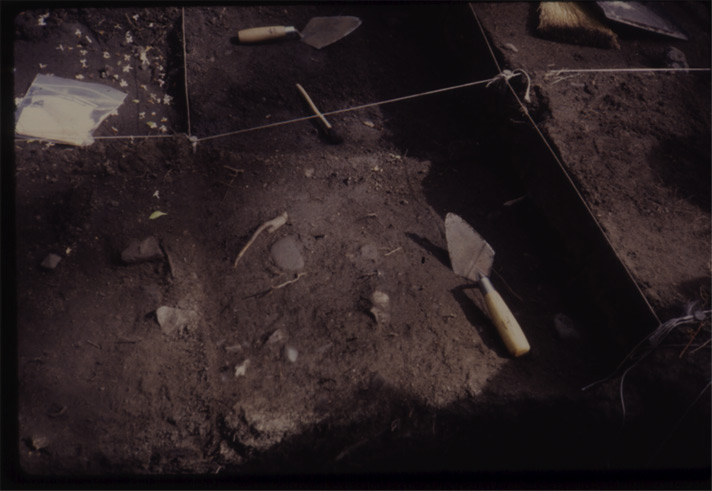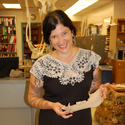Digging Jacksonville – May 2016
The Southern Oregon Historical Society (SOHS) recently provided me with a unique opportunity to research, explore, and snoop around the scenic Hanley Farm in order to provide a synthesis of the past archaeology conducted at the site. Located on Jackson Creek just outside of Jacksonville, the farm was first homesteaded in 1852, and has been the subject of a variety of archaeological investigations for decades. It was my role to use the modern tools of the trade to compile, comprehend, and report on the mysterious surrounding past research into the site.
The “Century Farm” was located in an area known to have been occupied by Native Americans long before gold was discovered in the Jacksonville area. Michael Hanley began improvements to the property shortly after he arrived in the 1850s, including the construction of a stone structure over a spring near the center of the farm—which survives to this day. Small stone buildings like this one protected a farm’s spring from freezing solid during the colder winter months and served as a natural food storage facility during the warmer months. The idea of a multi-use spring house was nothing short of innovative at the farm. Similar structures likely dotted farms across the Ohio landscape, Michael’s place of birth.
By 1994—nearly 150 years from its construction—the spring had been redirected, and the house ran dry within the then-brittle and bulged stone walls. In response to architectural preservation and improvements to the dilapidating structure, the spring house became the subject of the society’s archaeological field school, done in collaboration with Southern Oregon University in 1997. This excavation was an opportunity to educate the public, and to use the dig as a means of introducing students and volunteers to the world of archaeology. While this excavation was a success, the results were never written-up from this project or the subsequent ones, and much information about the project (including maps and field notes) was lost over time.
Hanley Farm is currently in need of some infrastructure improvements. Past archaeological excavations can provide important information allowing these projects to be conducted with as little impact to the archaeological deposits at the site as possible. By revisiting the early archaeological work on the site, I was able to relocate the eleven excavation units from the 1990s field schools, and inventory nearly 2,000 artifacts spanning the centuries of occupation on the site. This new information will allow Hanley Farm and the Historical Society to move forward with plans to improve the site and better interpret the history of its use over time.
Andrew Bastier is an Anthropology graduate from the University of Hawaii with archaeology experience throughout the Western United States. He joined the SOULA team in March of 2014 contributing to multiple projects in the Jacksonville area including the Britt Gardens Renovation Project and Hanley Farm Excavation. Andrew’s major interest includes replicating prehistoric technologies. You can reach SOULA by contacting Chelsea Rose at rosec@sou.edu and follow SOULA on facebook/Southern Oregon University Laboratory of Anthropology.
Photo: A photograph of the excavation units during the 1997 fieldwork. Photograph courtesy of the Southern Oregon Historical Society.

 Chelsea Rose is an historical archaeologist who specializes in the settlement and development of the American West. Chelsea and the Southern Oregon University Laboratory of Anthropology (SOULA) conduct archaeology across Oregon and have done several projects in Jacksonville. You can reach Chelsea at rosec@sou.edu and follow SOULA on
Chelsea Rose is an historical archaeologist who specializes in the settlement and development of the American West. Chelsea and the Southern Oregon University Laboratory of Anthropology (SOULA) conduct archaeology across Oregon and have done several projects in Jacksonville. You can reach Chelsea at rosec@sou.edu and follow SOULA on